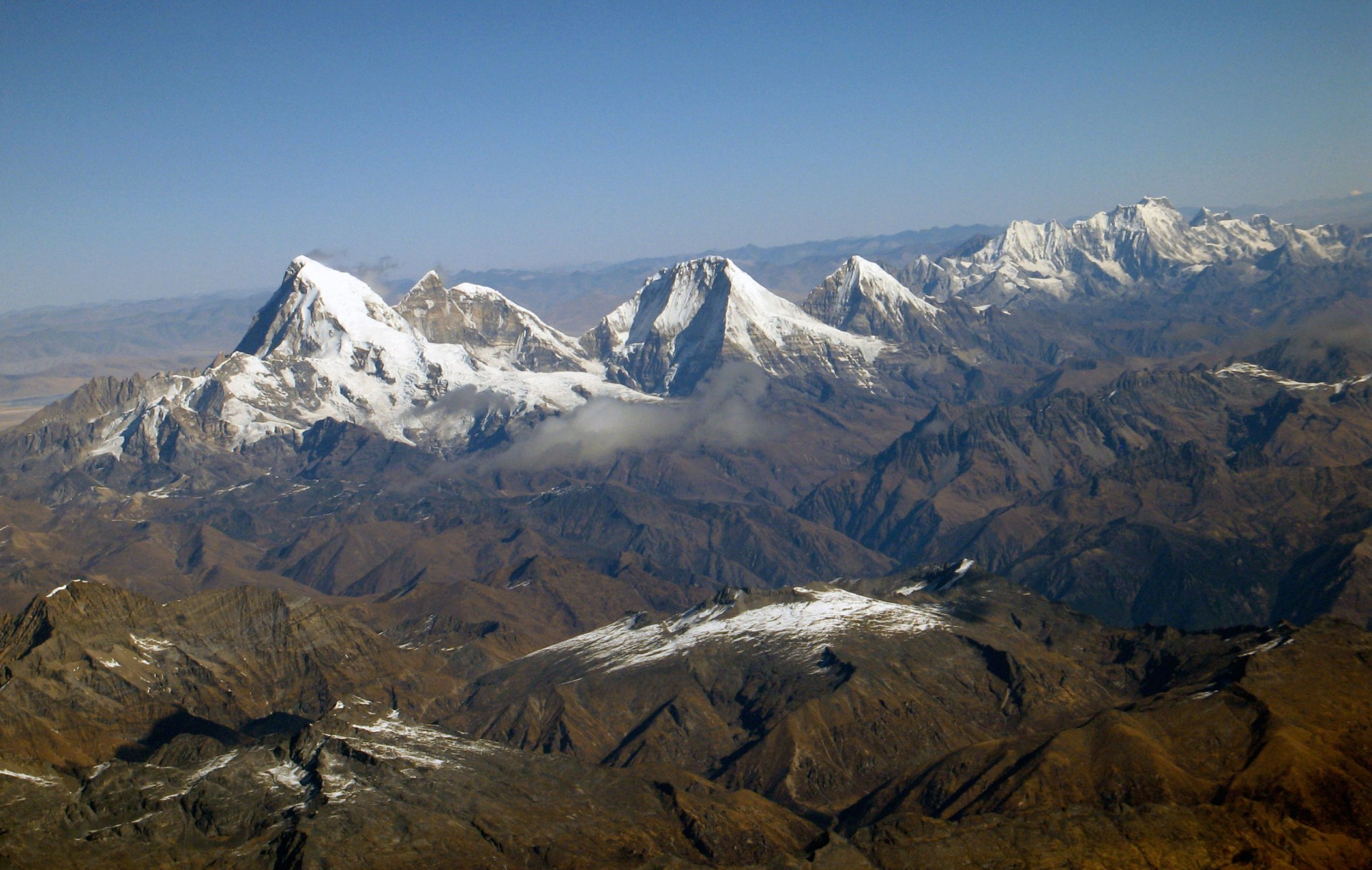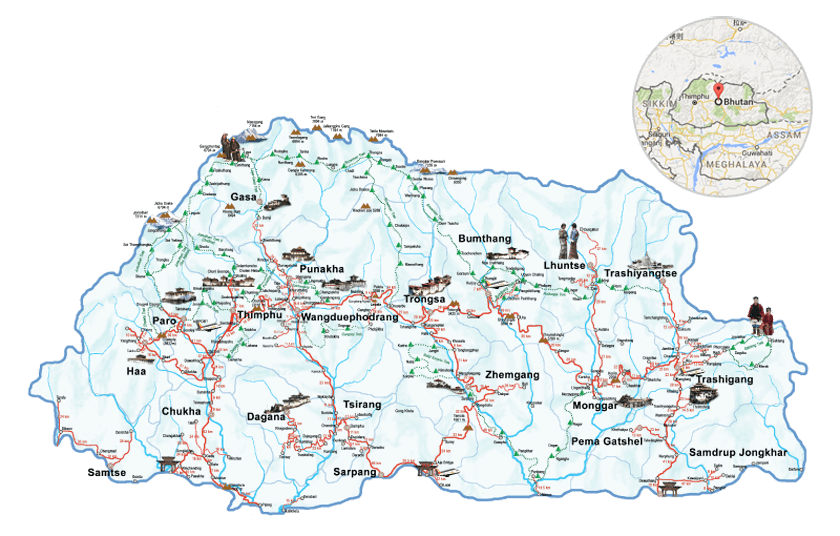Trekking
Jhomolhari Base Camp Trek 9 Days

Mount Jhomolhari (7,134 m) is Bhutan’s second highest peak situated on the northern border with Tibet. It’s as graceful as it’s nearby neighbour Jitchu Drake is striking.
The six days of trekking is only of moderate difficulty. The trek passes through forested valleys of rhododendron and blue pine into impressive mountain landscapes home to yak herders who may even invite you into their tents for tea!
- DURATION: 9 Days
- DIFFICULTY: Moderate
- DESTINATION: Jhomolhari base camp
- MAX ALTITUDE: 4,044 m
- ACCOMODATION:
- GROUP SIZE: Any number
- TRIP STARTS AT: Paro
- TRIP ENDS AT: Paro
- BEST SEASONS:
Trip Overview
Mount Jhomolhari (7,134 m) is Bhutan’s second highest peak situated on the northern border with Tibet. It’s as graceful as it’s nearby neighbour Jitchu Drake is striking.
The six days of trekking is only of moderate difficulty. The trek passes through forested valleys of rhododendron and blue pine into impressive mountain landscapes home to yak herders who may even invite you into their tents for tea!
TOUR MAP AND ITINERARY

Day 1 :
The excitement of your journey has already begun on your flight with fabulous views of the Himalayan range. We’ll collect you from the airport and check you into your hotel. Depending on the arrival time of your flight, we can either visit Paro’s ancient Rinpung Dzong and Ta Dzong (the museum) or just have a stroll around the town of Paro.
Day 2 :
Early morning hike to Taktsang Monastery. It takes about an hour and half to reach the view point but it is well worth trekking the extra 45 minutes to the monastery and looking at where Guru Rinpoche landed with his magic tigress to meditate. We’ll take lunch at the viewpoint restaurant.
After reaching the valley again, we drive north to the end of Paro valley to visit the ruins of Drukgyel Dzong and weather permitting to get a spectacular view of Mount Jhomolhari. On the way back we’ll visit the Kyichu Lhakhang, an ancient 7th century monastery with fragrent orange tree in its courtyard.
- Hotel
Day 3 :
Drive up to Drukgyel Dzong where the road ends and the trek begins, following the river gently uphill through a narrow agricultural valley passing by village houses. Camp is just beyond the army outpost of Gunitsawa.
- Shana campsite at 2,890 m
- 17 km and approximately 5 hours of walking
Day 4 :
The day begins on uphill trails following narrowing river valley. The trek is mostly gentle uphill. Just before reaching camp at Thangthangka you get a great view of Mount Jhomolhari. We camp in a meadow with a stone shelter about 20 minutes after passing Thangthangka.
- Soi Thangthangka camp at 3,575 m
- Approximately 7 to 8 hours trekking
Day 5 :
Today the valley begins to widen again and we begin to get wonderful views of high ridges and snow-capped peaks. You may see yak herders' winter homes here too. We camp beneath a ruined fortress at the base of Mt. Jhomolhari.
- Chomolhari Base Camp at 4,044 m
- 19 km and approximately 5 hours walking
Day 6 :
Today we have chance to explore the surroundings. If you are feeling energetic then you can trek up to Tsophu. From this lake, Mt. Jhomolhari and its subsidiary are directly west, Mt. Jichu Drake is to the north and unclimbed summits and ridges dot the horizon to the east.
Day 7 :
We begin our return journey today and follow the same trail down to Soi Thangthangkha heading back down towards Shana. Trail is mostly downhill the walking is pleasant and easy.
We at a place called Shing Karap, a small meadow with a stone hut housing a local family.
- Camp at Shing Karap at 3,100 m
- Approximately 6 to 7 hours of trekking
Day 8 :
We follow the same trail down towards Shana which takes about one hour, cross the Pa Chhu, and go past the military checkpoint of Gunitsawa. Soon we’ll be able to see Drukgyel Dzong where the road to Paro begins.
- A final 6 hours of trekking
- Return to the comforts of the hotel in Paro
Day 9 :
Early in the morning we’ll bring you to the airport for your onward flight.
WHAT'S INCLUDED
- Accomodation on twin sharing
- All transfers and sightseeing as on itinerary
- Three meals a day
- English speaking local tour guide
- Sightseeing admission fees
- Bhutan visa fee
WHAT'S Not INCLUDED
- Internal and international airfare costs (airfare is separately quoted)
- Expenses of personal nature such as drinks, tip, laundry, phone, etc.
- Extra expenses due to nature and unforeseen events.
- Travel Insurance
TRIP HIGHLIGHTS
-
Hike to Taktsang Monastery
-
Wonderful view of Drukgyel Dzong
-
Narrowing river valley
- Wonderful views of high ridges and snow-capped peaks
Discover Bhutan
Pristine mountain lakes, imposing glaciers and some of the world’s most endangered species await you in the mountainous amphitheatre of the Himalayas. Let us give you a selection of some of the country’s finest treks.